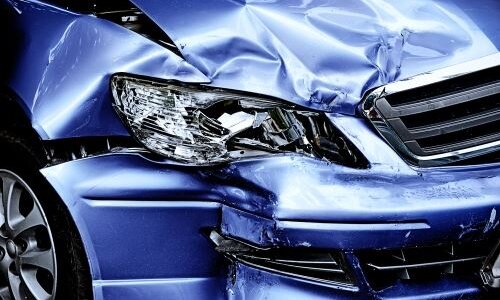As a firm that’s represented auto accident victims for more than 35 years, we’ve seen a wide range of situations. No two accidents are the same, and there are times when these cases can bring unique issues and legal elements into the picture, especially when it comes to determining who is at fault.
Negligence, fault, and liability comprise the core of car accident lawsuits. In simple terms, the rights of injured accident victims can be easily understood when the following applies:
- A motorist failed to drive safely and in accordance with the law by texting on their phone.
- As a result of their texting, which is widely known to be illegal and dangerous, the motorist caused a collision with another vehicle, and injured that driver.
- As a result of the motorist’s negligence, the driver suffered injuries that could have otherwise been preventable, and experienced actual damages as a result (i.e. medical bills, lost wages from missing work, pain and suffering).
These types of situations are common and simple to understand – a negligent driver injures someone, and so is liable for their damages. There are other situations where it’s not always as clear how a victim can go about recovering compensation. Often, we hear from victims who were injured in crashes, but also played a contributing role in causing the wreck.
When situations happen where both parties involved in a crash share fault, California law uses comparative negligence to resolve the matter. The legal doctrine of comparative negligence works by assigning a percentage of fault to each party, which then determines the compensation recovery a victim receives.
Let’s look at an example that illustrates comparative negligence:
- Driver A is stopped at a stop sign and wants to turn left onto a busy road that does not have a stop sign.
- Driver A yields to traffic and decides to turn when they feel it is safe to do so.
- Driver B is traveling on the busy road while texting is not able to slow down in time and crashes into Driver A, who is injured.
In this example, Driver B is at fault for being distracted, but Driver A is also partially at fault because they should have been more attentive and cautious before pulling into traffic and making the turn. Because both drivers contributed to the accident, a percentage of fault will be assigned to each. Let’s say that Driver B is 80% at fault and Driver A is 20% at fault. If Driver A suffered $100,000 in damages in the crash, they would only be able to recover $80,000 – the full amount of damages reduced by 20% caused by their own negligence.
The same applies if the situation were reversed and Driver A was 80% at fault and Driver B was 20% responsible. Under comparative negligence, Driver A would only be able to recover $20,000 for the 20% that was caused by Driver B’s negligence.
The legal theories and work involved in car accident claims can be complex. At times when victims should be focusing on getting better, it is wise to trust an experienced professional who can handle the work on your behalf, and use their experience to pursue the maximum compensation possible. That’s exactly what we do at Casper, Meadows, Schwartz & Cook.
If you have questions about you rights, our car accident attorneys in Walnut Creek can help! Contact us today for a FREE consultation. Our firm serves victims and families throughout Contra Costa County and the Bay Area.

